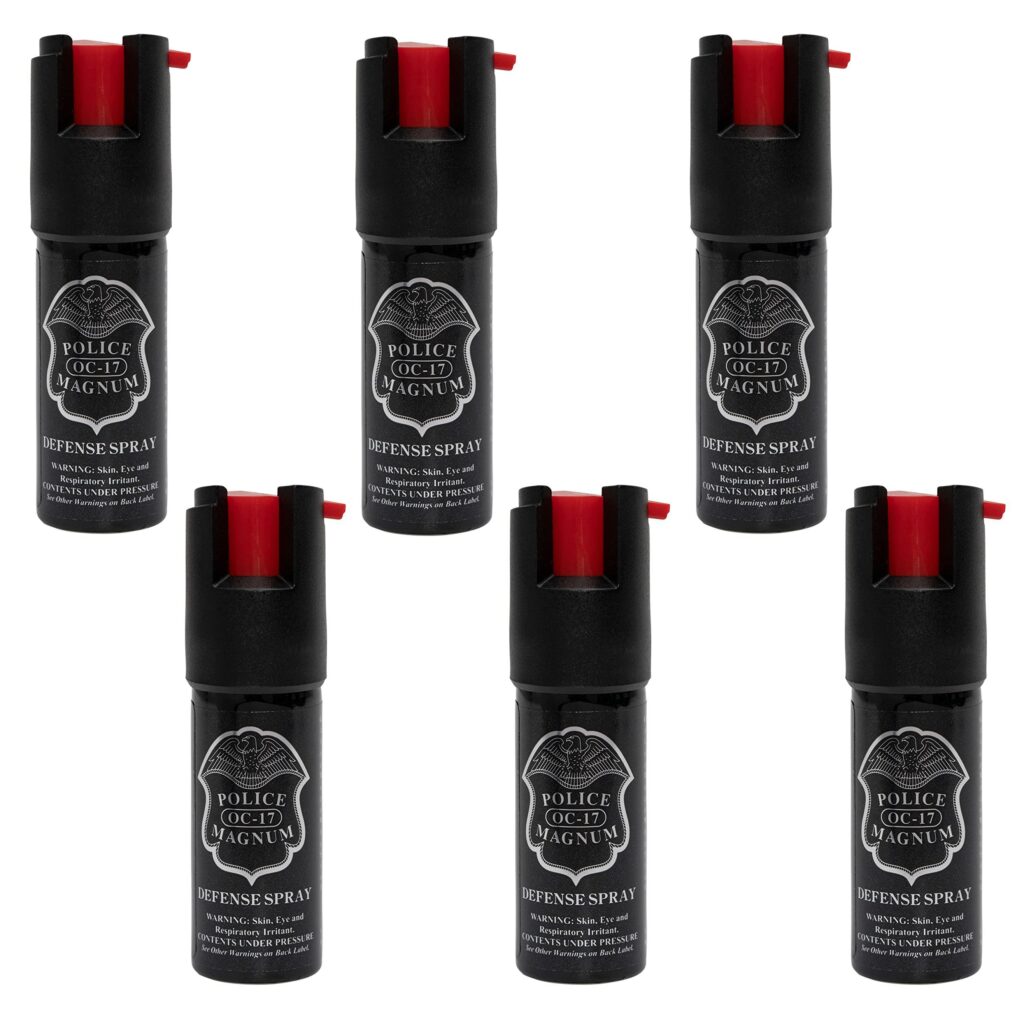Table of Contents
- Understanding the Challenges of Using Pepper Spray in Confined Areas
- Optimizing Spray Technique for Maximum Effectiveness in Tight Spaces
- Safety Precautions and Environmental Considerations During Deployment
- Training Drills and Practice Routines for Real-World Scenarios
- Wrapping Up
Understanding the Challenges of Using Pepper Spray in Confined Areas
When deploying pepper spray in confined spaces, the risk of self-contamination escalates dramatically. The close quarters mean the aerosol can easily drift back toward the user or linger in the air, causing unintended irritation to the eyes, respiratory system, and skin. Additionally, poor ventilation intensifies exposure, making it crucial to consider environmental factors before use. The challenge is to balance effective deterrence of a threat without compromising your own safety or the safety of innocents nearby.
Key factors to manage include:
- Wind direction and airflow: Be aware of how air currents can redirect spray.
- Limited maneuvering space: Constrained movement can affect stance and aiming precision.
- Proximity to bystanders: Avoid dispersing spray in crowded environments to minimize collateral impact.
- Choice of spray pattern: Stream or gel formulations reduce the risk of widespread aerosol contamination in tight spots.
Optimizing Spray Technique for Maximum Effectiveness in Tight Spaces
When facing confined environments, your spray technique must be deliberate and precise to ensure maximum impact. Instead of the usual broad spray, aim for short, controlled bursts that limit spray dispersion and prevent aerosol buildup which can affect your own breathing. Maintain a steady wrist and point the nozzle directly at the attacker’s face, particularly targeting the eyes and nose – the most sensitive areas. It’s also crucial to position yourself strategically; try to keep a solid, balanced stance that allows quick movements without compromising your stability in tight quarters.
Here are some key tips to enhance your effectiveness in these scenarios:
- Short, targeted sprays: Avoid wasting your pepper spray with long streams; two to three one-second bursts are usually sufficient.
- Minimize self-exposure: Use wind direction and avoid spraying against walls or confined reflective surfaces that can blow the spray back at you.
- Train for close encounter: Familiarize yourself with the feel and weight of your canister to deploy quickly under pressure.
- Clear escape plan: Always have a planned exit route to retreat immediately after deploying the spray.
Safety Precautions and Environmental Considerations During Deployment
When deploying pepper spray in confined areas, the foremost priority is to ensure the safety of all individuals in the vicinity, including yourself. Given the close quarters, mist or spray residue can easily drift and cause unintended exposure. To minimize risks, avoid spraying with the wind direction at your back; instead, aim to position yourself so the spray disperses away from both you and bystanders. Always wear protective eyewear if available, and remain aware of the immediate environment to prevent contact with sensitive equipment or materials that could react adversely. Additionally, clearly communicate with any companions or security personnel to ensure everyone is prepared for the spray deployment.
The impact of pepper spray extends beyond physical safety, raising essential environmental considerations. Use should be measured and restrained, particularly indoors or in areas where ventilation is limited, to reduce the spread of aerosolized irritants. Consider the potential for triggering fire alarms, smoke detectors, or creating slippery surfaces as the residue settles. In public or shared spaces, dispose of any pepper spray canisters responsibly, avoiding littering or contamination. By balancing effective defense techniques with mindfulness of your surroundings, you contribute to a safer, more controlled intervention that respects both human health and environmental integrity.
Training Drills and Practice Routines for Real-World Scenarios
To effectively prepare for high-pressure situations where space is limited, incorporating realistic training drills is essential. Focus on close-quarter maneuverability by practicing with obstacles that simulate tight corners, hallways, or confined indoor areas. This helps build muscle memory for swift, controlled movements and ensures precise deployment without compromising safety. Drills should include quick holster draws under time constraints, targeting both stationary and moving threats to improve reaction time and situational awareness.
Integrating scenario-based routines elevates preparedness by replicating common encounters such as crowded public transport or narrow stairwells. Incorporate these elements into role-playing exercises where you navigate constrained environments while maintaining proper grip and aiming techniques. Additionally, train to manage spray pattern control to avoid contamination of your own space or innocent bystanders, emphasizing short bursts over continuous spraying. Building confidence through repetitive practice ensures seamless handling when every inch and second counts.
- Use padded or inert training dispensers for safe drills
- Practice deploying spray from different carry positions
- Simulate defensive moves combined with pepper spray use
- Train with distractions and stress factors to mimic real encounters
Wrapping Up
Mastering the use of pepper spray in tight spaces is an essential skill for personal safety, demanding both confidence and precision. By understanding the unique challenges these environments present and practicing key techniques regularly, you can ensure that your response is swift and effective when it matters most. Remember, preparation is your best defense-combine knowledge with practice, stay aware of your surroundings, and maintain control under pressure. With these strategies in your toolkit, you’ll be empowered to protect yourself confidently, even in the most confined spaces. Stay safe and stay prepared!Check Our Other Blogs
- StunGun – Your Trusted Source for Stun Guns, Laws, and Self-Defense Tips
- PepperSprayLaws – Your Trusted Resource for Pepper Spray Information
- StunGunLaws – Your Trusted Guide to Stun Gun Legality and Safety




